Chris Parkin explores a remake of a classic rifle as the Sauer 100 goes stainless; check out his detailed test & review of the Sauer 100 Stainless XTA, including how different ammo brands perform with it
(Scroll to the bottom of the article for a table showing how different ammo brands performed in the Sauer 100 Stainless XTA)
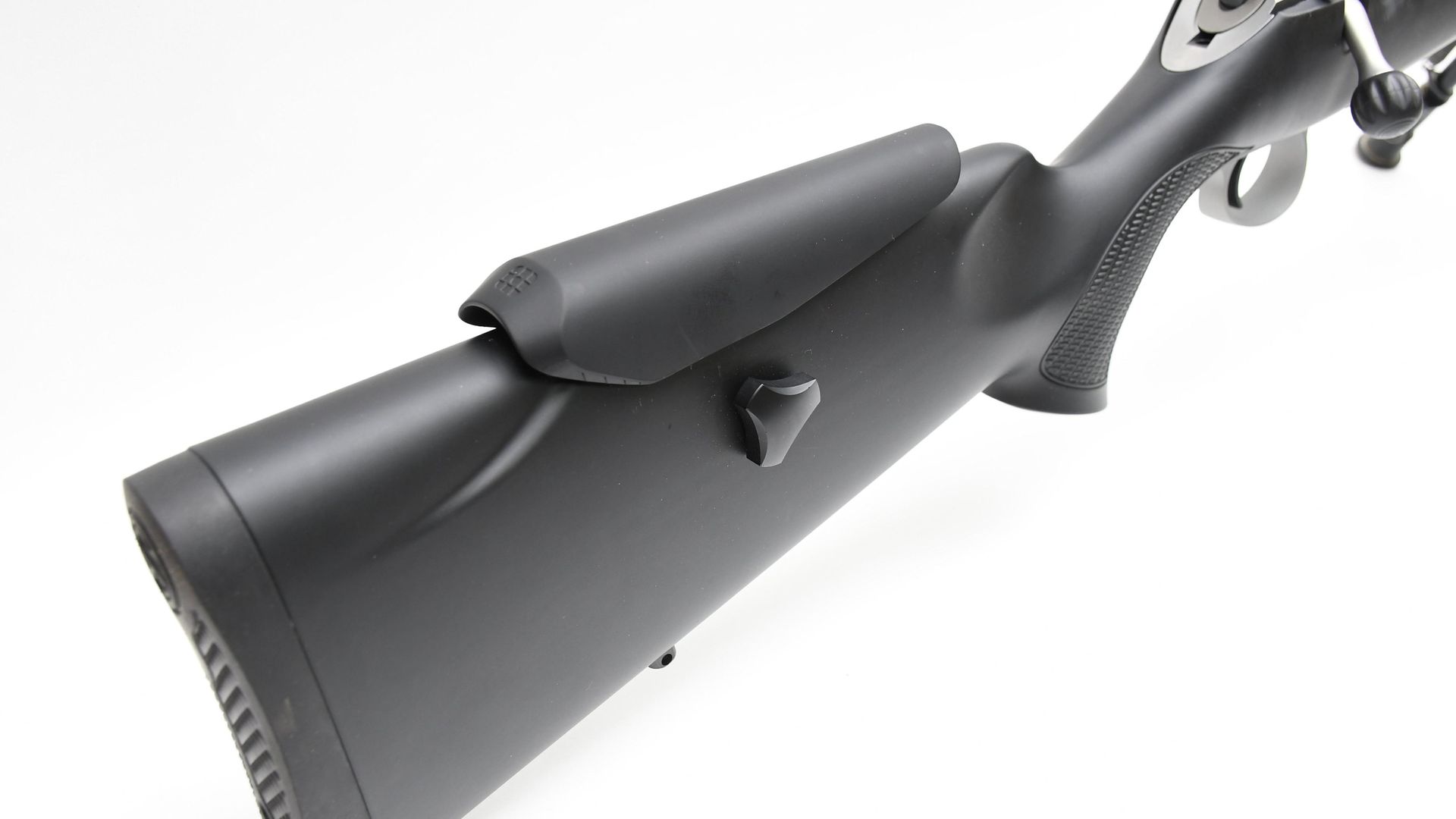 credit: Chris Parkin
credit: Chris Parkin
As much as visual adornments are nice, do they make a rifle shoot better? Probably not, but there is a certain subconscious element relating to pride of ownership and personalisation that may make us perform better.
I have plenty of experience of the Sauer 100 design. I have used a few of these rifles in both relaxed and high-pressure situations – and both with excellent results; it is a truly capable hunting rifle with no unnecessary bells or whistles.
Perhaps the most appealing version for the UK hunter (until now) was the Cerakoted version with its innate ability to resist corrosion. I once battered such a rifle by falling on it whilst stalking, but other than some visual damage it nevertheless held zero perfectly. But Cerakote is exactly that – a coating – and like all coatings, no matter how tough and protective, it can get chipped and scarred, so Sauer have now opted for the inherent corrosion resistance of stainless steel.
As a name, ‘stainless’ means exactly that, it stains less, using nickel and chromium in various quantities to enhance corrosion resistance and/or improve mechanical characteristics with elements such as molybdenum and manganese.
While they do stain less, they nevertheless are not impervious to corrosion, although they certainly fend it off far better than plain carbon steel, hence its use in cutlery. I deliberately left the Sauer wet and muddy on two occasions and it wiped clean with no spotting after 24 hours.
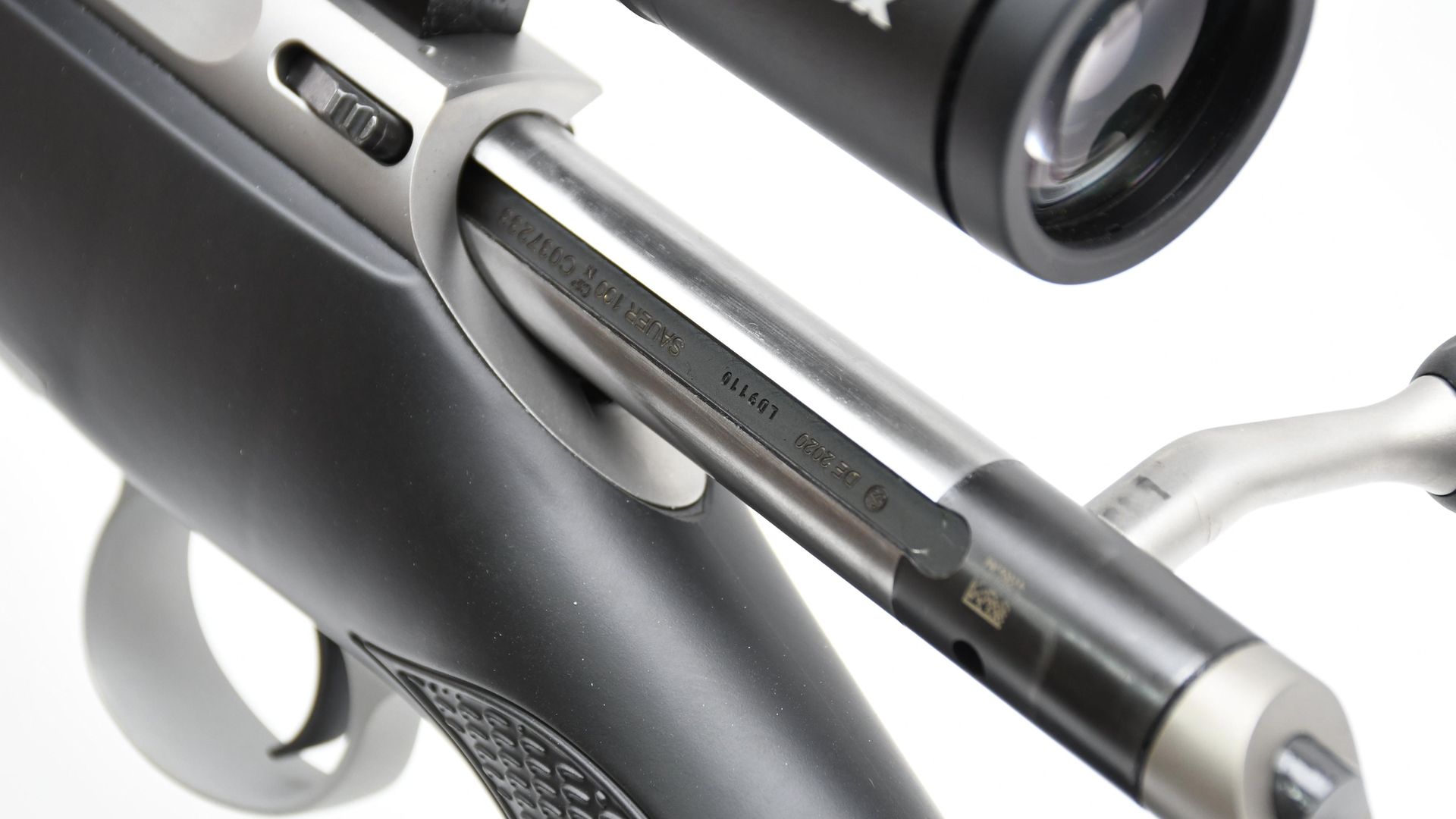 credit: Chris Parkin
credit: Chris Parkin
Overview
The 100 Stainless XTA begins with a neat 15x1 invisibly-capped thread for a moderator or brake at the tip of the 22"/560mm cold- hammer- forged barrel. External finish is a fine bead blast to discourage both pitting and visual reflections, from what is an inherently brighter surface than matt black or blued steel.
Muzzle diameter is 17.3mm, tapering outwards gently before a swell up to the 28mm reinforce surrounding the chamber, becoming 35mm where it enters the cylindrical action. Sauer use a breech ring abutment arrangement, which clamps between the barrel and receiver for the bolt’s three lugs to bear upon. A single raceway is machined into the left side of the bolt’s 20.3mm diameter, providing slick, unobstructed travel that’s virtually impossible to jam or stutter during its 114mm stroke.
There’s a 60° lift on the 60mm handle, which is tipped with a 20mm matt black polymer ball featuring grooves for extra grip. The rear shroud looks to have had a slight shape redesign allowing it to flow more smoothly into the swooping rear action bridge, thereby removing certain niches that previously allowed debris to accumulate prior to reaching the similarly profiled action tang which is all stainless steel, alongside a black cocking indicator.
Scope mounting is handled by four threaded holes, compatible with any Long Action Remington 700 bases. I fitted a Britannia Picatinny rail without issue, using T15 Torx cap screws. Twin sprung plunger ejectors are seated on the push-feed bolt face, which strips rounds from the underslung twin column polymer magazine used across both the Mauser and Sauer ranges.
I have covered this in detail before. It’s a great design: tough, quiet, no marring of the brass and easy to load in or out of the rifle with the ability to feed more ammo dropped straight into the chamber.
Primary extraction is performed by the receiver’s taper at the bolt handle’s base. The right-side extractor claw on the bolt face had no problem drawing out brass. The three-position safety catch is silent and sited behind the bolt handle with forward for ‘fire’, centre for ‘safe’ (with bolt operation) and rear for ‘safe with bolt locked’. Operation is quiet and bullets are not marked or scored in any way as they slide up the feed ramp when chambered.
Sauer again provide 2.2 to 4.4lb weight adjustment on the single-stage trigger. This review gun was breaking consistently at 1,150gr, with no perceived movement as the sears impinged upon one another. The tigger has a smooth black 9mm curved blade, which is perfect on a hunting rifle that’s likely to be used in inclement weather with gloves.
There’s plenty of space in front of the trigger blade within the cast aluminium guard, which is an extremely snug fit within the stock’s injection moulding. The mag well shows a good compromise between a snug fit and reliability in all temperatures, whilst still allowing for a bit of dirt here or there, as is inevitably encountered in the real world.
The mag is released with a recessed button at the front, allowing the internal spring at the rear to ease it down into your waiting palm. These mags seem to prefer the rear to slightly lead the front when clipped into place, providing a tactile feel and soft audible click once in place. They are entirely flush, so a fingertip swipe assures the mag is safely installed.
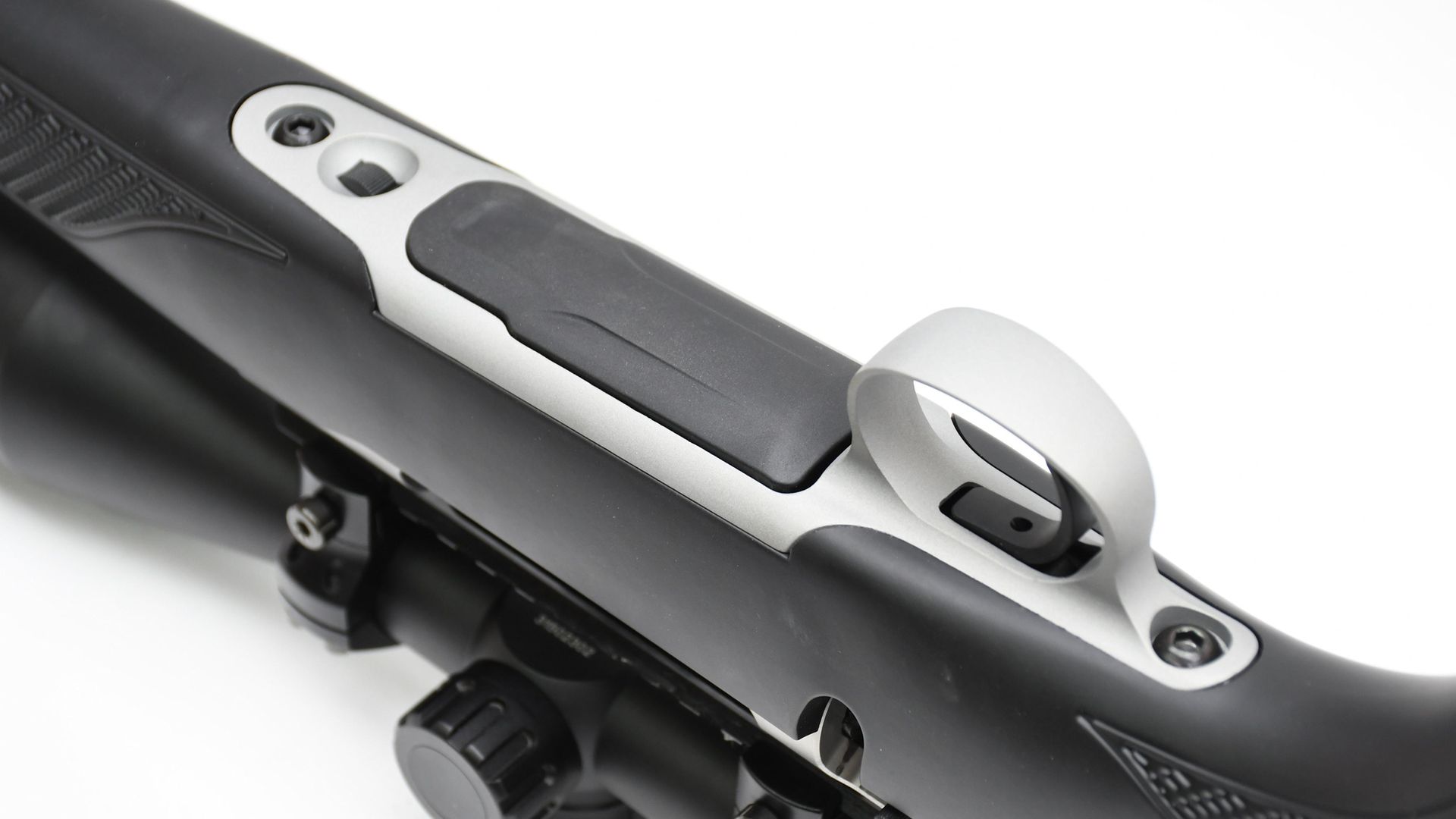 credit: Chris Parkin
credit: Chris Parkin
The devil is in the detail
Rifles often look similar, so you may question why one is more expensive than the other. Well, the devil is in the detail. In this case, the stock is that detail, offering everything you could want on a hunting rifle. Firstly, it’s black, discreet, modest and shows immediate potential courtesy of a full free-floating barrel, all the way back to the action in this case, with sufficient stiffness to ensure it won’t contact the barrel while providing plenty of grip on the fore-end.
Inlaid panels sport modernised scales of chequering and the material itself has a ‘soft touch’ feel, but not the squishy feel that some soft touch stocks go with, which invariably become very tacky as they age. A stud under the fore-end fixes your sling or bipod into position. It’s well anchored and repeated to the rear on the butt’s underside.
I like the bottom metal detail; it blends seamlessly like a jigsaw with the stock’s shape, offering a discreet contrast in light grey to match that of the barrelled action on the otherwise monotone build. Reach to trigger from the back of the grip (depending on exact position) is 80-85mm and with a slightly open radius; its profile offers excellent feel with a very slight ambidextrous palm swell, and space for all three spare fingers.
The butt initially looks conventional: a plain slope away to the solid, 16mm recoil pad, which, without spacers, provides a 365mm/14.3" length of pull, which suited me perfectly. I find European rifles generally longer than those from the US, and German brands such as Blaser, Mauser, Merkel and Sauer epitomise this trend.
It’s always very interesting to see how hunting rifles from closer-range hunting cultures contrast with rifles intended for mainly prone or well-supported positions. Sauer’s other hallmark is the comb layout, rising from nose to heel to inherently remove pressure and shock from the cheek weld when the gun recoils. It’s not a ski jump, but it does contribute to all day comfort, allowing for a better, tighter comb fit.
The star of the show is the adjustable comb, showing a slender but rigid polymer cheekpiece, rising up to 35mm above the underlying stock. Twin pillars support it without any wobble or rattle and height is easily adjusted for perfect optical alignment with a single 25mm triangular dial, which requires minimal grip to apply tension.
The cheekpiece’s soft-touch coating matches the rest of the stock perfectly, never feeling cold. All edges and corners are chamfered to avoid cuts from the relatively thin components, snagging on clothing etc. Again, the devil is in the detail. You might assume the triangular knob would be uncomfortable if shot from the opposite shoulder but it’s not an issue (sadly, there’s no left-hander available).
Sauer like to vary their action anchoring a little, and here we see an different approach, yet one with great performance. Removing the Allen screws fore and aft of the mag well shows a 10mm nut on the front stud requiring a slim spanner or thin-walled socket to remove. Once removed, the action lifts out, showing its front stud to be the main anchoring point. This slots through a machined aluminium bedding block, bonded into the rigid polymer injection moulding. Once tightened in, the rear of the action almost hangs in balance, with just a light nip required to retain the stock and trigger guard from the rear Allen screw. This design certainly seems to avoid undesirable bedding stresses, as proven when I re-assembled the rifle and shot it without loss of zero.
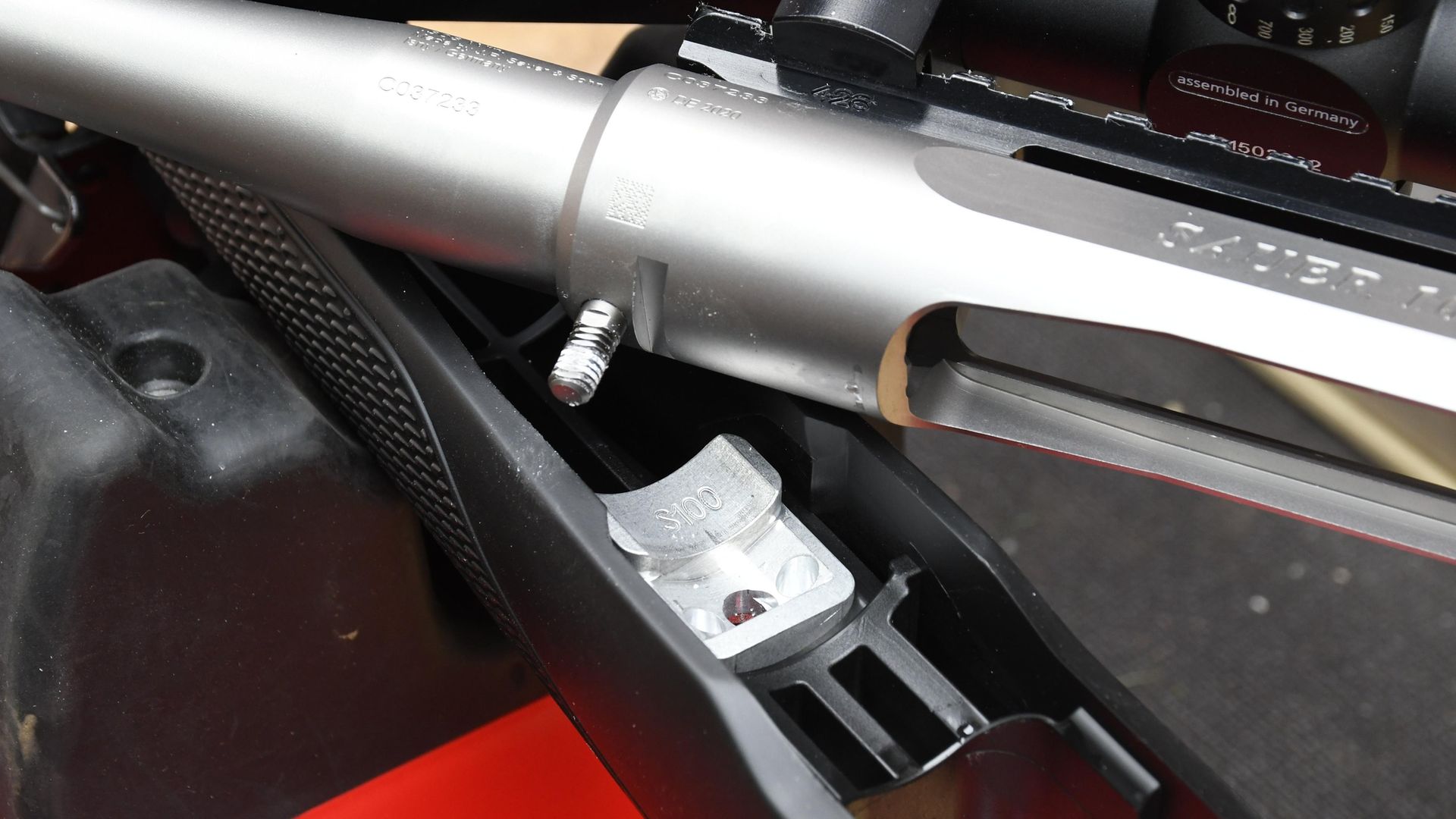 credit: Chris Parkin
credit: Chris Parkin
Ideal optics
Sauer supplied a Minox ZX5 scope in 3-15x56 which I fitted in Tier One rings on the Picatinny rail. I was reminded of just how much I like these optics, with a design and styling ethos so akin to the rifle itself. The reticle is crisp and simple, with generous exit pupil and eye box in a specification ideally suited to UK stalking. The large objective and very usable mag range make it ideal for use in both dim woodland and at longer ranges out on the hill.
Bore sighting and zeroing were problem-free ¼" clicks rather than 10mm. No specific ammunition was suggested, but I ran some 170gr .308 GECO ammo to get an initial zero and to run this brand-new gun in a little before breaking out the chronograph.
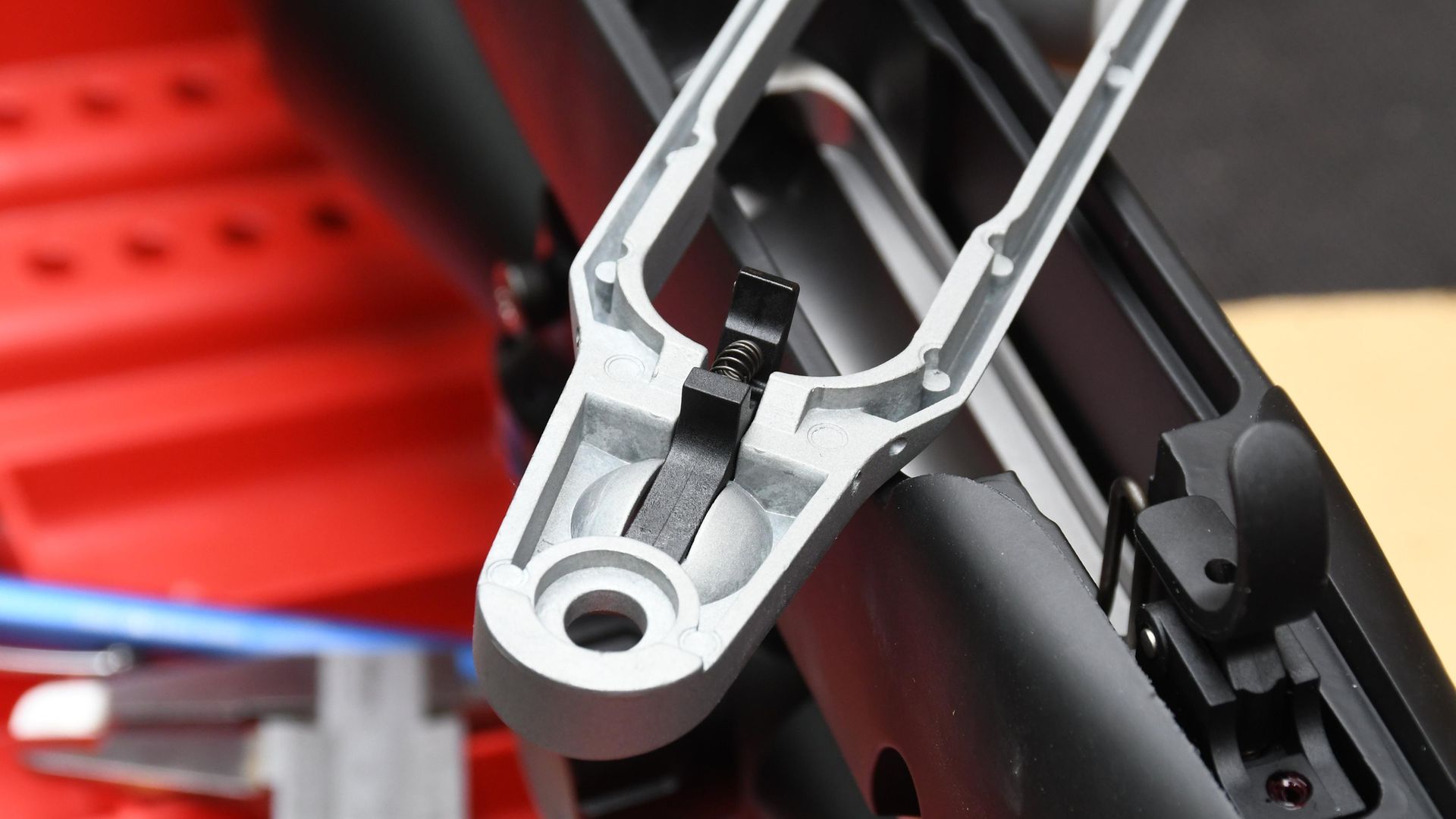 credit: Chris Parkin
credit: Chris Parkin
At the range
I had no problems attaining the magic MOA standard but, as always, odd flyers on any factory ammo are what occasionally spoils averages over long strings on a hunting rifle, which I generally prefer to assess with three-round groups, even if the magazine is 5+1 in capacity.
I had bore-scoped the rifle on arrival and saw nothing iffy in the barrel, just the very fine details of the manufacturing process plus a little residual copper form the proving process. A good clean before and after the first session then led to more formal bench testing with the chronograph, wind flags etc – all the things that sap the fun out of shooting.
Hornady 150 and 165gr SST weren’t initially quite within the MOA range, but as with the 170gr Geco, the 178gr Hornady Precision Hunter model with ELD-X bullet was my go-to choice. Although heavier, they seem to offer a gentler power curve as they burn, making them softer to shoot than the 170 Geco in this well-behaved rifle.
You go from the snappiness of the 150s pushing nearly 2900 fps in Superformance format to a refined feel with exceptional longer-range ballistics and high sectional density. This preference for the longer, heavier bullets transferred well to copper bullets, where the 165 GMX were also within the magic minute for three shots. The 1 in 11" twist is a great compromise for a sporting .308 running medium-weight bullets, where a 12" is perhaps a little old fashioned and 10" perhaps more than necessary, although still a solid choice.
With a moderator fitted, as is most likely these days, recoil was linear, and the firm recoil pad remained planted in the shoulder. It shows grippy serration and no sponginess, allowing for a good perception of applied shoulder pressure. The stock avoids any harmonic reverberation through recoil and the light cheekpiece further isolates you from noise and vibration, its slender form fitting under the cheekbone without jaw displacement.
Due to the chequering and inherently grippy surface texture, I didn’t feel the need for excessive force when holding the rifle. The medium/large grip felt secure without feeling it was swamped by my hand, or that I was over-reached to the trigger. Weight adjustment for the latter is possible with an Allen key and it looks like the sear engagement was threadlocked, so I left it alone.
There was no noticeable impact shift switching from bipod to shooting from sticks, and the light bolt operation made the gun smooth to operate, never snagging a round or failing to eject a spent casing. Although some rather ‘warm’ factory ammo required exceptionally heavy lift on the handle, the Sauer coped where other rifles may not have done.
All other ammo, including handloads, performed without any issues. I put this down to a particular batch of ammo, which I normally find reliable, but in this case exhibited a degree of variability in headspacing when initially loaded. The Sauer’s precise headspacing is a benefit and shows up the weaker tolerances of others. I discarded the rest of that particular ammo batch for further investigation.
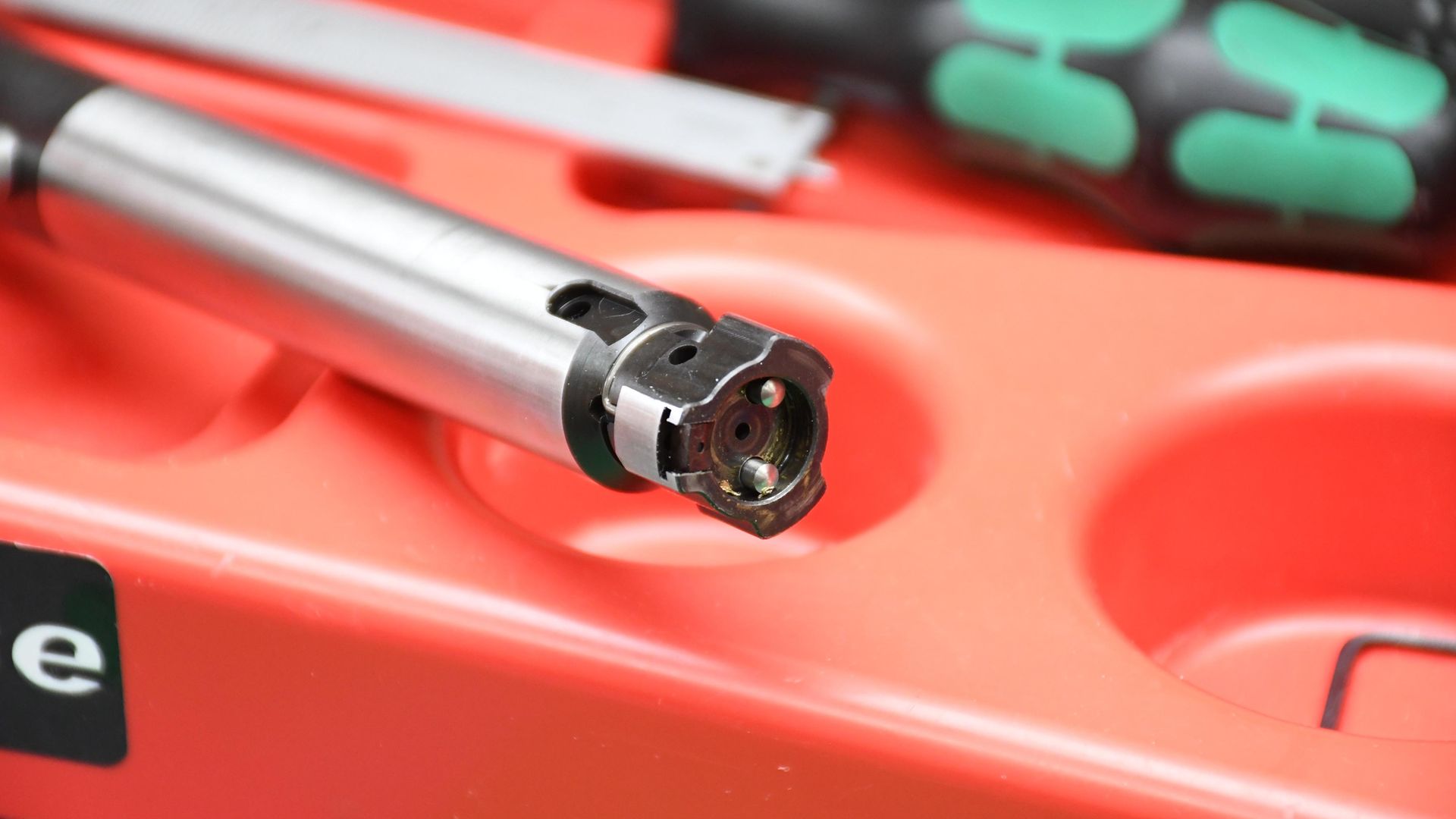 credit: Chris Parkin
credit: Chris Parkin
The bottom line
All rifles are a compromise, yet the Sauer seems to show so little fault in anything it does, providing all that’s required, with a keen eye for finer detail that could go unnoticed from just a causal glance. I dislike reviewing guns I can’t find something wrong with, so decided to shoot some handloaded match ammo to see what it could do with five-round groups.
I shot the reliable 168gr Sierra Matchking/Lapua/Viht 140 recipe that I have used for years as an absolute .308 benchmark and as usual the load and indeed the rifle didn’t disappoint. Most rifles are fine for single shots and hunting situations in terms of comfort but they wouldn’t really appeal, especially to me, for a long day on the range.
I rather like using sporters as an all-day carry and find them fun to use on realistic hunting instruction days with longer range shots – far more so than heavy target rifles.
For me, if I was asked the ‘if you had to choose one gun..?’ question my mind would go straight to this rifle. Well done, Sauer, you generally make a good rifle but this is one I would shoot all day and rely on to effortlessly fend off the weather as well.
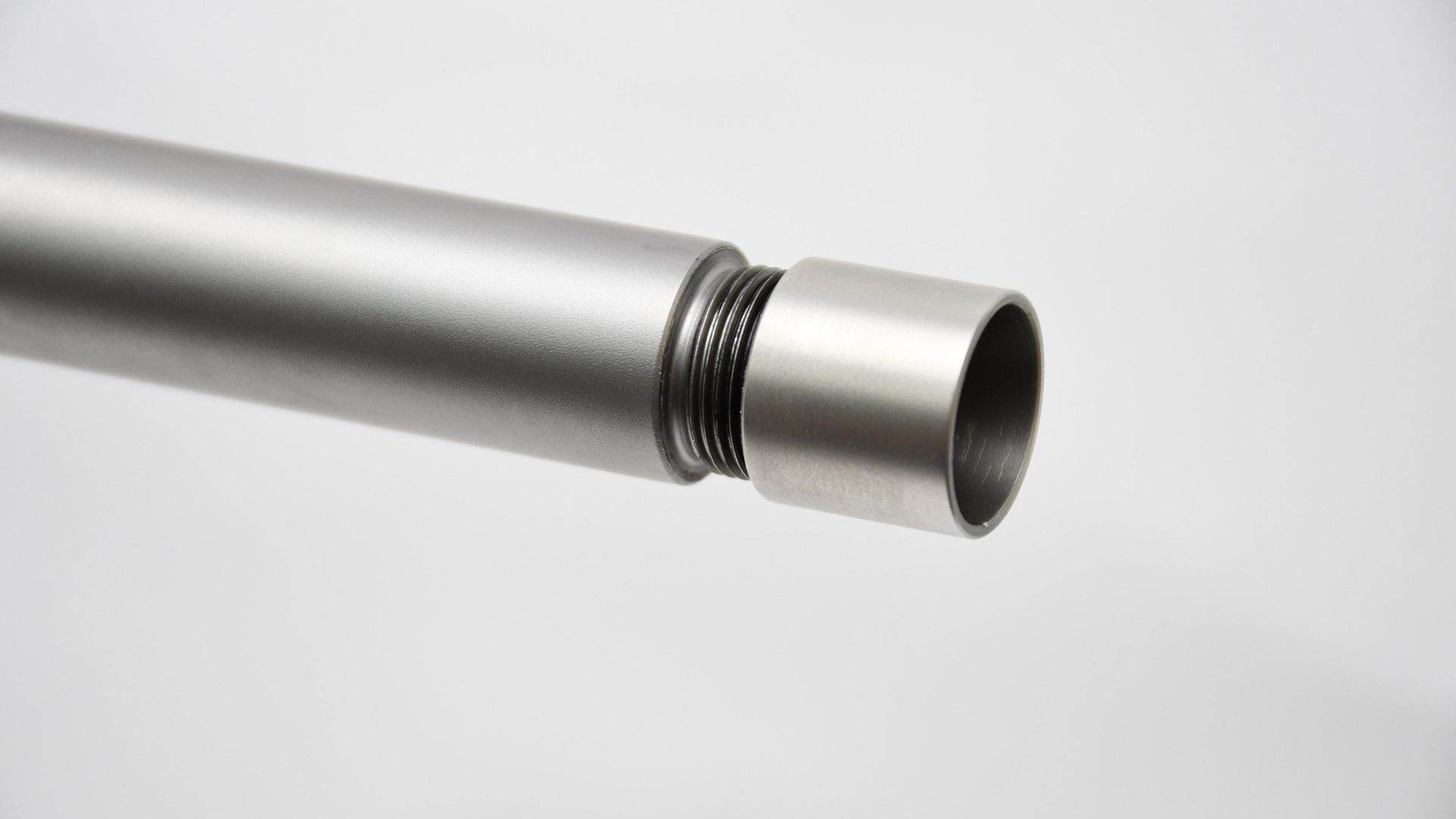 credit: Chris Parkin
credit: Chris Parkin
Likes
- Stainless construction
- Excellent trigger
- Ever reliable magazine system
- Fundamental concept purity
Dislikes
- Left-handed option not available as yet
Verdict
Sauer have cleanly streamlined exactly what is needed for a functional UK hunting rifle, ideal for any conditions and without any hype or excess `fat`
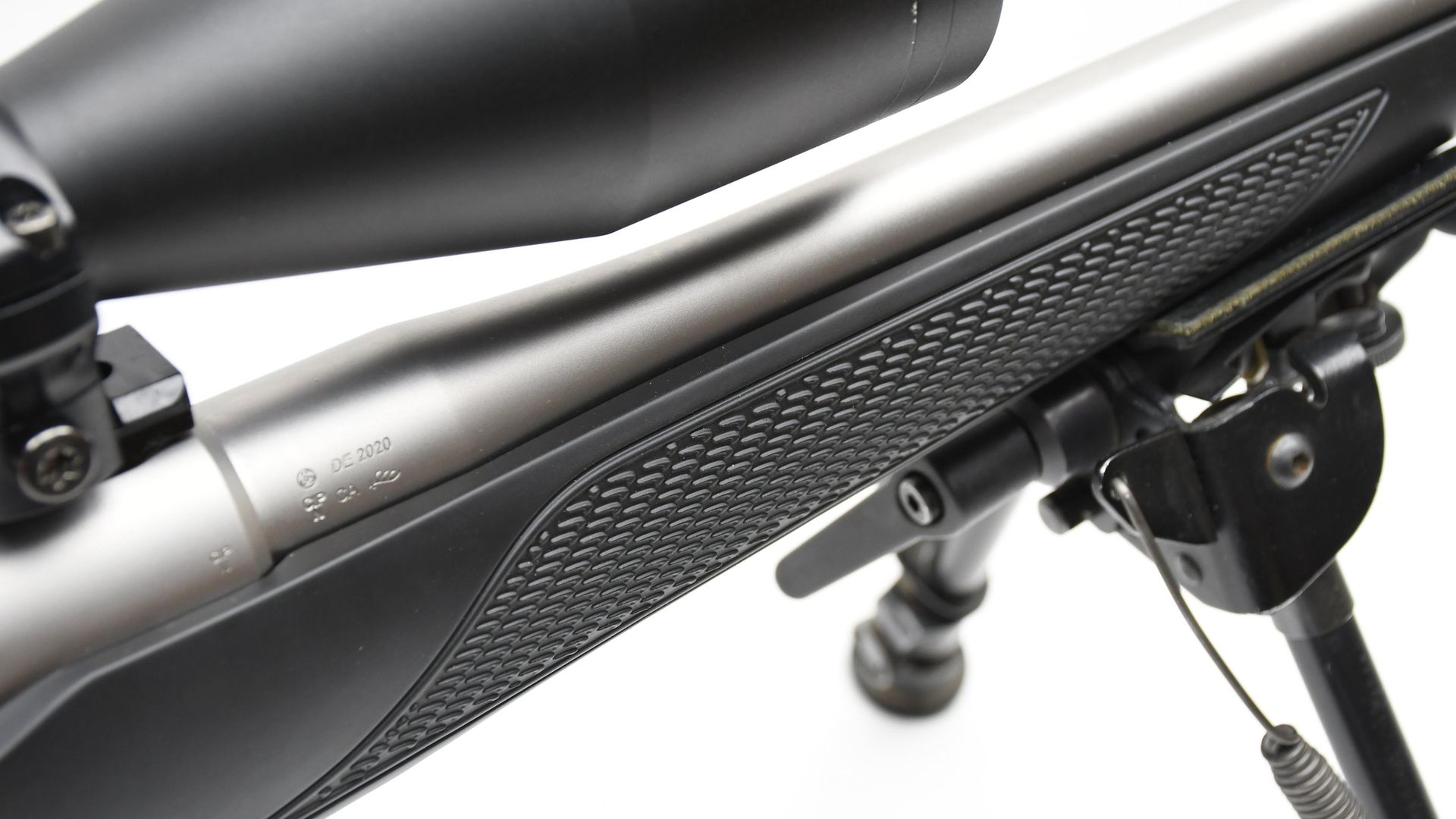 credit: Chris Parkin
credit: Chris Parkin
Specifications
Calibres: .223 Rem, .308 Win, .30-06 Spring, .6.5 Creedmoor .300 Win Mag.
Overall length: 1065mm (42”)
Weight: 3.1kg (6.8 lbs)
Stock: Injection moulded polymer with soft touch finish
Magazine: 5+1
Trigger: Adjustable single stage, 1000-2000gr (2.2-4.4lbs)
Length of pull: 14.3/365mm
Barrel length: 560mm (22”) 1 in 11” twist rate
Price: £1488
Contact: Blaser Group Limited
Tel: 01483 917412
www.sauer.de/en/
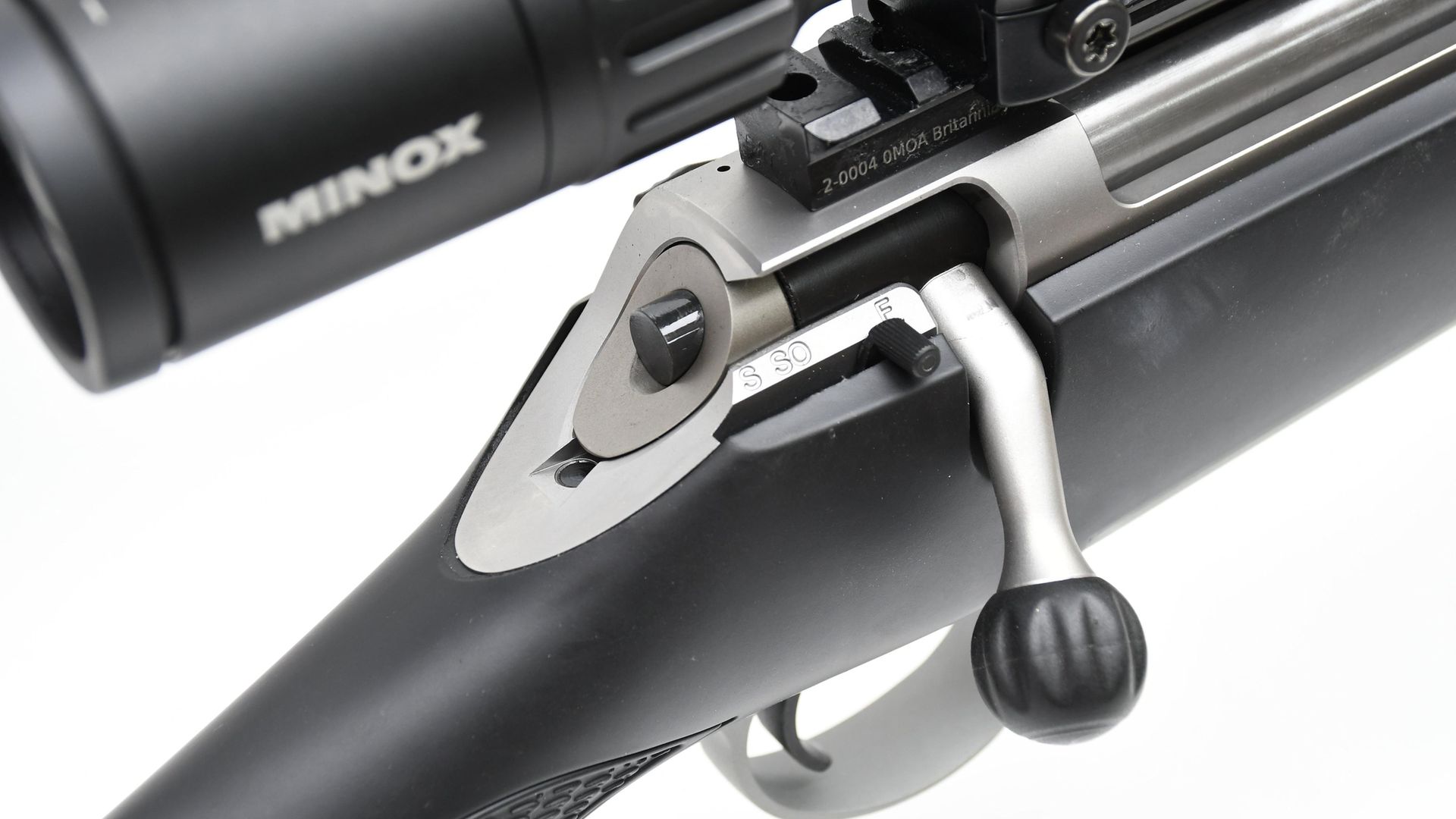 credit: Chris Parkin
credit: Chris Parkin
Also used
Tier One Scope Mounts
www.highlandoutdoors.co.uk
Britannia Picatinny Scope rail
www.csw-online.co.uk
Hornady Ammunition
www.edgarbrothers.com
Federal Ammunition
www.gmk.co.uk
Lapua and Vihtavuori
www.hannamsreloading.com
Sierra Bullets
www.henrykrank.com
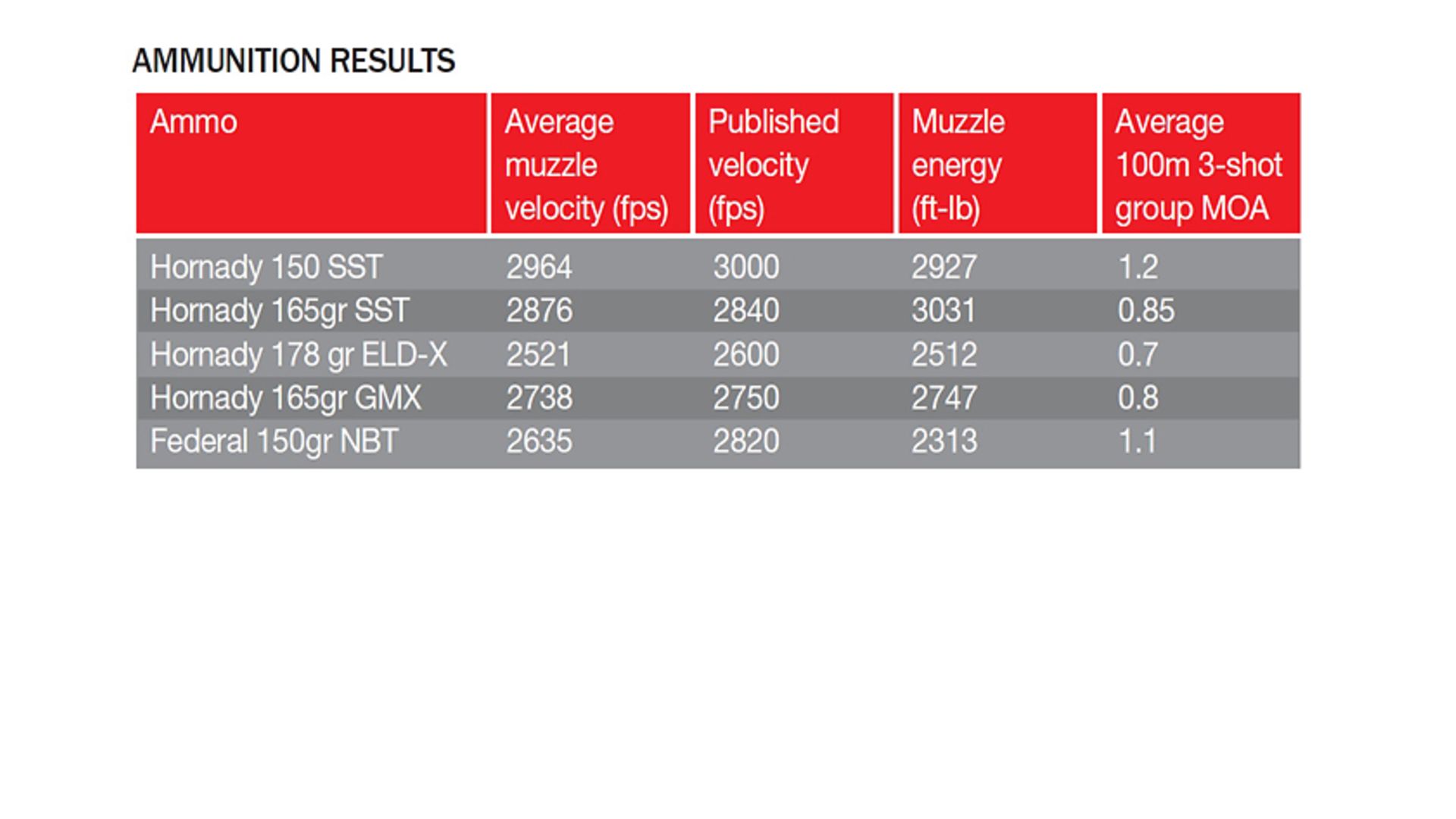 credit: Archant
credit: Archant